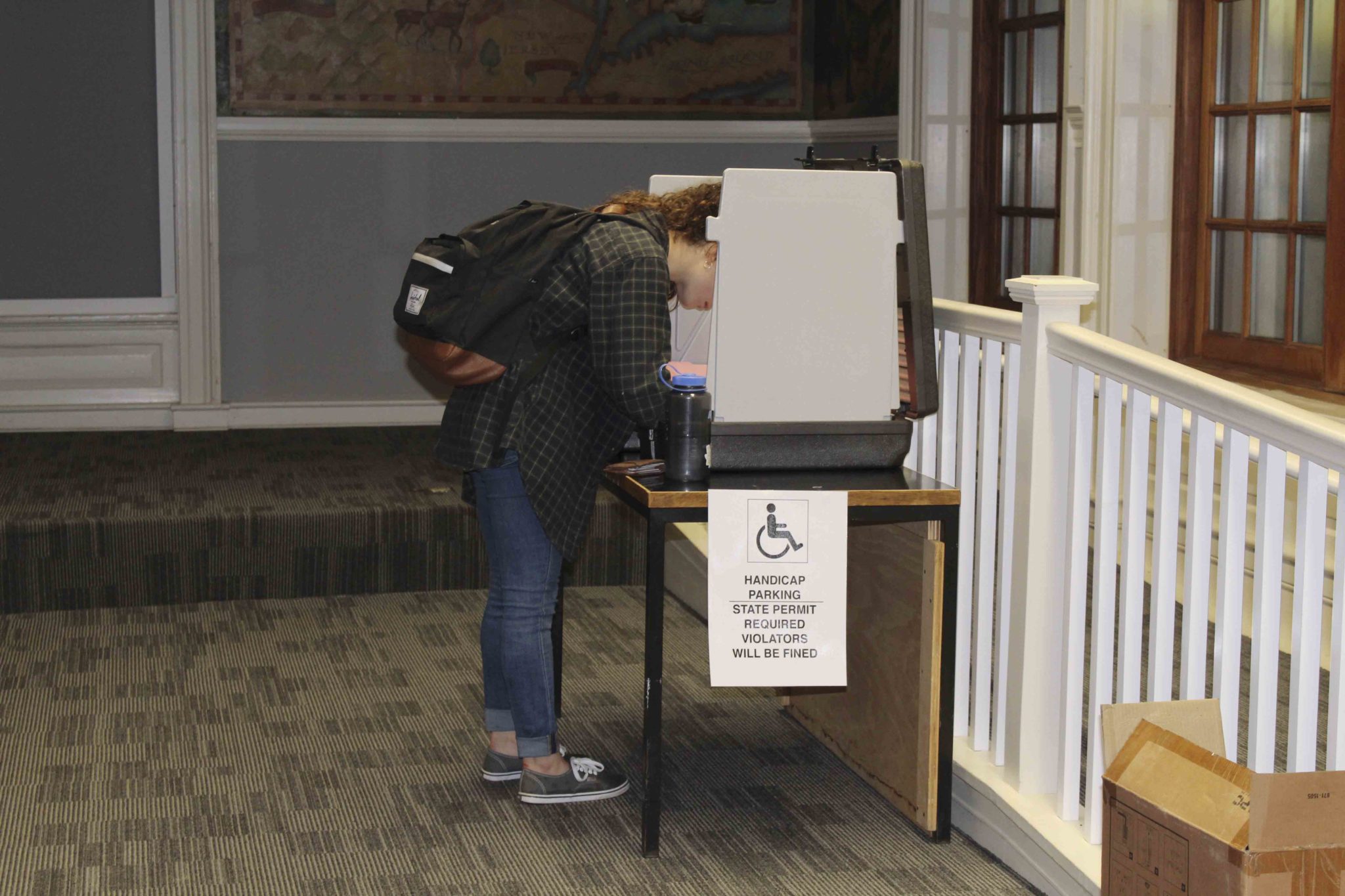
Voting participation among Yale students rose from 32.7 percent in the 2012 presidential election to 56.7 percent in 2016, according to a report from the National Study of Learning, Voting, and Engagement, or the NSLVE.
This report places Yale’s student voting rate 6.3 percent above the average voting rate for all institutions of higher education that sign up to receive reports from NSLVE, which now counts more than 1,000 colleges and universities among its ranks. Yale’s 32.7 percent student voting rate in 2012 lagged 14.2 points behind the average rate of all NSLVE institutions — 46.9 percent.
To calculate institutional voting rates, NSLVE divided the number of students who voted by the number who were eligible to vote. But in calculating voting rates within individual fields of study, NSLVE simply divided the number of students who voted by the number who were in the field, without adjusting for students who are not eligible to vote.
According to Yale’s Office of Institutional Research, international students made up 21.9 percent of Yale’s total enrollment of 12,458 students in 2016.
“We were very pleased to see the positive results for Yale in the recent National Study of Learning, Voting, and Engagement report,” said Secretary and Vice President for Student Life Kimberly Goff-Crews. “Yale student voting is up, and the percentage of students voting is higher than at most other colleges and universities. The university is happy to support civic engagement.”
The report also calls attention to several distinctive features in voting patterns at Yale. Among students whose gender was reported to NSLVE, just under 70 percent of female students voted, compared to a slightly smaller slice of the male student population — 61.8 percent.
Voting rates among students studying physical sciences, computer science, engineering, social sciences and mathematics stood at 34.6 percent, 36.2 percent, 38.2 percent, 40.3 percent and 42.3 percent, respectively. On the other hand, 54.8 percent of students studying psychology, 50.2 percent of students studying history and 50.2 percent of students studying English language and literature voted in the 2016 election.
Across the more than 1,000 institutions covered by NSLVE, students in STEM fields had the lowest voter turnout rates for both the 2012 and 2016 elections — at 40.8 percent and 43.6 percent, respectively.
NSLVE was founded by Tufts University’s Institute for Democracy & Higher Education in 2013 on the heels of a U.S. Department of Education request that American universities facilitate greater student civic learning and engagement. Since then, many American universities have made student voting rates a point of school pride.
Harvard University and Duke University, for instance, are among roughly 330 colleges and universities participating in the “All In Campus Democracy Challenge,” an initiative that aims to “cultivate generations of engaged citizens who are essential to a healthy democracy” by recognizing institutions of higher education that plan on and achieve higher voting rates among students.
Jordan Cozby ’20, president of the Yale College Democrats, said he approves of any effort by Yale to boost voter turnout.
“Yale consistently projects service to others and community engagement among its central values,” Cozby said. “Voting is one of the clearest ways to demonstrate these values, and show that Yale students care about New Haven, Connecticut, and the nation’s political system as a whole. It’s essential that we work together to encourage voter turnout, regardless of political affiliation.”
The nationwide campaign to boost voter turnout among students has also drawn criticism from Republicans who view voting initiatives on liberal college campuses as veiled attempts to gather votes for left-leaning candidates. This can constrain administrators at Yale who fear upsetting conservative alumni by launching voting initiatives on campus.
Dean of Yale College Marvin Chun said that “I value and want to encourage voting registration and participation,” but declined to comment any further on Yale’s voting participation in order to remain “apolitical.”
Still, Ben Zollinger ’19, president of the Yale College Republicans, said that having students civically engaged would be a positive development regardless of political affiliation. “All too often, a major complaint about Ivy League campuses is that the Ivory Tower is too far separated from the rest of the country, so we always want students to stay engaged with their community’s and nation’s political environment,” he said.
Others who study or work in politics said the real impact of Yale pushing to increase voter turnout will probably not be felt at a national level, but rather at a local one.
Adam Thal, a postgraduate associate in the Policy Lab at Yale’s Institution for Social and Policy Studies, noted that Yale students are different from New Haven residents as they tend to be more affluent and less likely to be African American or Latino.
“The most important thing would probably not be an ideological thing of encouraging democratic turnout, it would actually be the implications for local elections,” he explained. “You can imagine if Yale made this big effort to turn students out, it’s not going to have a huge impact on national elections, but it could very well swing a mayor’s race, or some other kind of local election, and potentially in a way that biases the outcome away from what the average resident of New Haven wants.”
Ben Mallet, who has worked with multiple Connecticut political campaigns and managed Hacibey Catalbasoglu ’19’s campaign for Ward 1 alder, said any effort to register more Yale students is commendable, but cautioned that “Yale should be wary of its growing electoral footprint in New Haven.”
He noted, for example, that since the opening of the two new colleges on Prospect Street, Yale students now make up the majority of voters in Ward 1 and Ward 22. An aggressive student voter registration drive, he explained, could make Yale students even more powerful in New Haven politics.
“It is right that Yale students have their voice in New Haven city government, but it is important that our representation is always proportional to our neighbors in the city,” Mallet said.
Britton O’Daly | britton.odaly@yale.edu







